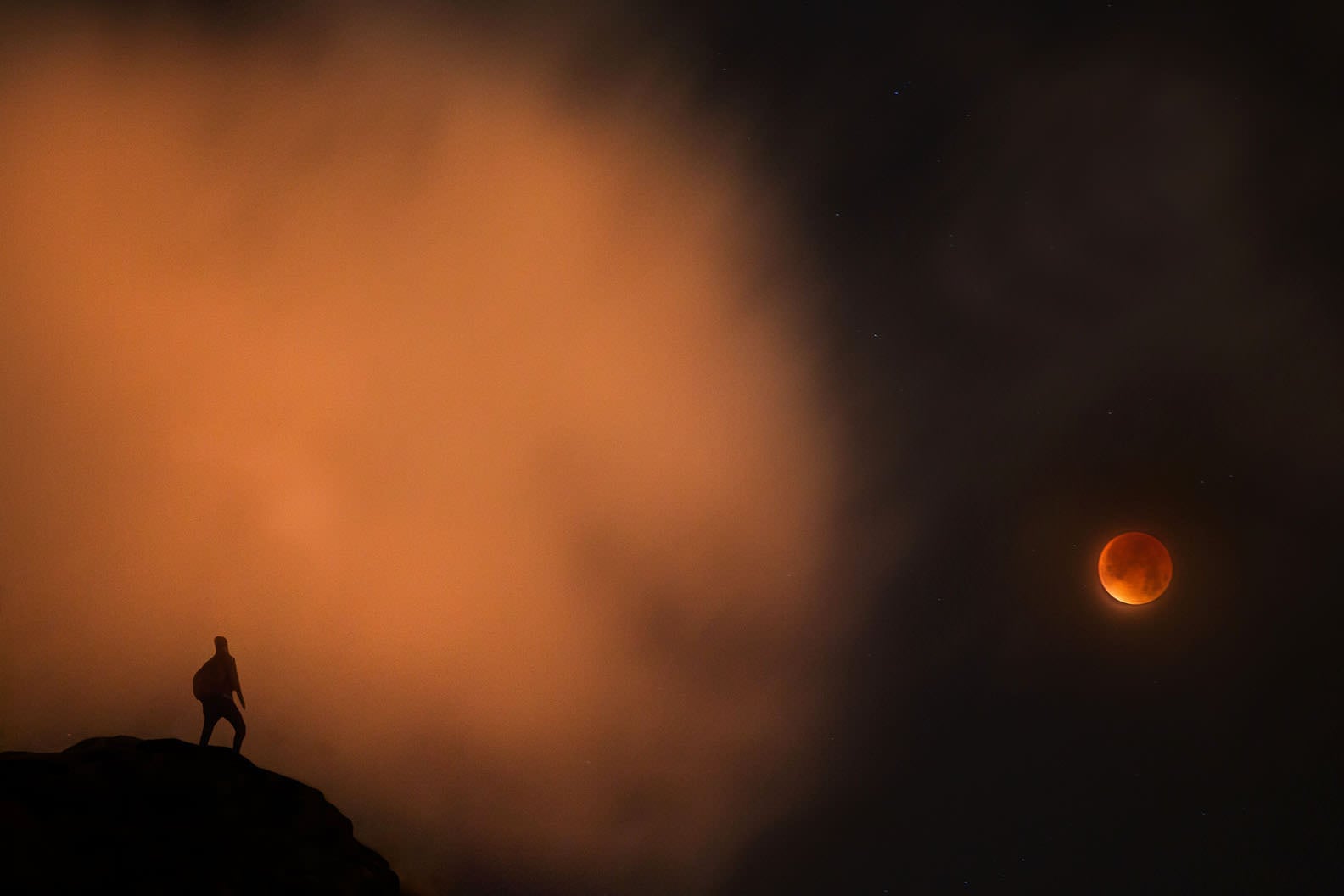Like some of you, I outran the clouds just in time to catch last night's total lunar eclipse. What a beautiful event! Here are some gorgeous pictures from our readers and Universe Today staff — souvenirs if you will — of the last total lunar eclipse
anywhere
until January 31, 2018.
The sky got so dark, and the Moon hung like a plum in Earth's shadow for what seemed a very long time. Did you estimate the Moon's brightness on the
? My brother and I both came up with L=2 from two widely-separated locations; William Wiethoff in Hayward, Wisconsin rated it L=1. All three estimates would indicate a relatively dark eclipse.
[caption id="attachment_122561" align="aligncenter" width="580"]
Nicely-done sequence of eclipse phases taken early September 28, 2015. Click to enlarge. Credit: Own Llewellyn[/caption]
The darkness of the umbra was particularly noticeable in the west quarter of the Moon in the giant volcanic plain known as Oceanus Procellarum. This makes sense as that portion of the Moon was located closest to the center of the Earth's dark, inner umbra. The plain is also dark compared to the brighter lunar highlights, which being more reflective, formed a sort of pale ring around the northern rim of the lunar disk.
[caption id="attachment_122562" align="aligncenter" width="387"]
Salute to the final eclipse of the current tetrad that began 17 months ago. Credit: Jason Major[/caption]
The bottom or southern rim of the Moon, located farthest from the center of the umbra, appeared a lighter yellow-orange throughout totality.
[caption id="attachment_122563" align="aligncenter" width="580"]
Wide angle view of the Moon (lower left) during totality in a star-rich sky with the Aquila Milky Way visible at right. Credit: Bob King[/caption]
This is just a small sampling of the excellent images arriving from our readers. More are flowing in on Universe Today's
. Thank you everyone for your submissions!
[caption id="attachment_122566" align="aligncenter" width="580"]
A crowd gather to watch the Moon during partial eclipse prior to totality. Credit: Robert Sparks[/caption]
[caption id="attachment_122565" align="aligncenter" width="580"]
A hint of the penumbra shows in this photo. Hint: look near left top. Credit: Roger Hutchinson[/caption]
[caption id="attachment_122568" align="aligncenter" width="580"]
A bloody Moon iindeed! Notice how dark Oceanus Procellarum (top) appears. Credit: Chris Lyons[/caption]
[caption id="attachment_122560" align="aligncenter" width="580"]
"Super Blood Moon". Credit: Alok Singhal[/caption]
[caption id="attachment_122578" align="aligncenter" width="580"]
Nice montage of images from eclipse start to finish. Credit: Mike Greenham[/caption]
[caption id="attachment_122570" align="aligncenter" width="580"]
One of the most awesome aspects of the eclipse was how many stars could be seen near the Moon. This picture was taken with a 100mm telesphoto lens. Credit: Bob King[/caption]
[caption id="attachment_122579" align="aligncenter" width="580"]
Rare shot of the totally eclipsed Moon and bright meteor. Credit: VegaStar Carpentier Photography[/caption]
[caption id="attachment_122580" align="aligncenter" width="580"]
A lucky break in the clouds made this photographer happy. Credit: Moe Ali[/caption]
[caption id="attachment_122581" align="aligncenter" width="580"]
Mary Spicer made exposures of the eclipsed Moon every 5 minutes. During totality, the Moon dropped behind a tree so she had to relocate the camera, hence the small gap in the sequence. 35 shots in total and stacked into one frame using StarStax. Credit: Mary Spicer[/caption]
[caption id="attachment_122571" align="aligncenter" width="580"]
The Moon caught after totality between clouds through a small refracting telescope. Credit: Bob King[/caption]
[caption id="attachment_122582" align="aligncenter" width="580"]
Another fine montage displaying all the partial phase plus early, mid and late totality. Credit: Andre van der Hoeven[/caption]
 Universe Today
Universe Today
